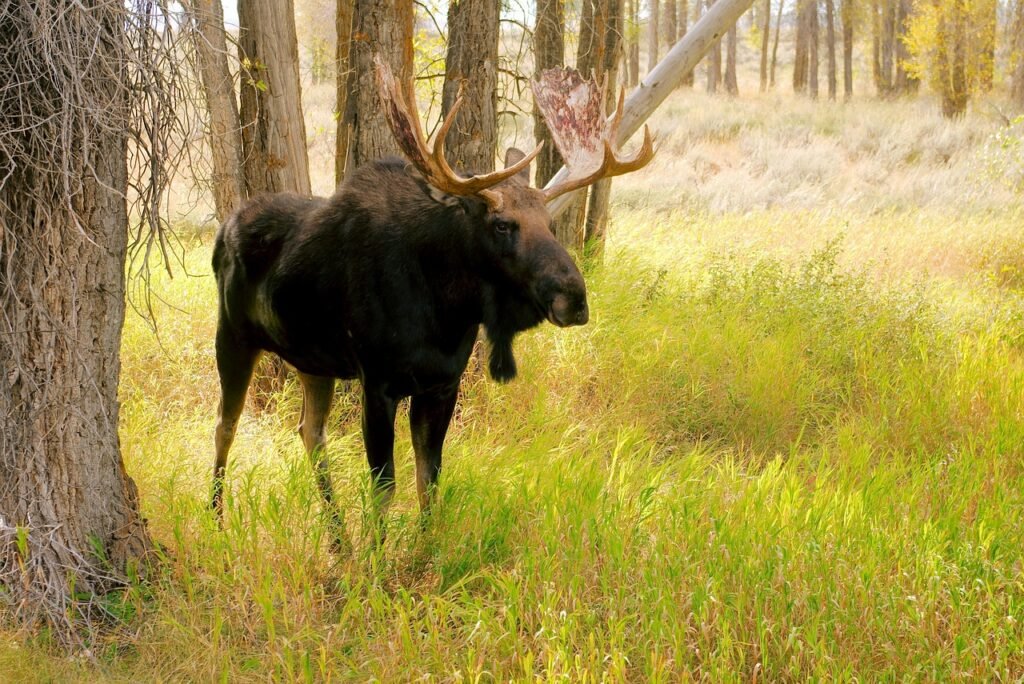Exploring the wilderness is an exhilarating experience, but it also comes with its own set of challenges, especially when it comes to encountering wildlife.
Understanding how to deal with various animals can make the difference between a thrilling story and a dangerous situation.
Here are some essential tips for surviving animal encounters in the wild.
Table of Contents
Preparation and Awareness

Know the Wildlife
Before venturing into any wilderness area, research the types of animals that inhabit the region. This knowledge will help you prepare for potential encounters and understand the behaviors of different species.
Stay Informed
Check for any wildlife alerts or warnings issued by park authorities. These alerts can provide crucial information about recent animal activities and potential dangers.
Carry Essential Gear
Always carry the following gear:
- Bear spray or pepper spray
- A whistle or air horn
- A flashlight
- A first aid kit
Surviving Animal Encounters: Bears

Identify the Type of Bear
Knowing whether you are dealing with a black bear or a grizzly bear can influence your response:
- Black Bears: Typically smaller and less aggressive.
- Grizzly Bears: Larger, with a noticeable hump on their shoulders and more aggressive behavior.
Stay Calm and Don’t Run
Running can trigger a bear’s chase instinct. Instead, back away slowly while facing the bear. Speak in a calm, firm voice to avoid startling it.
Use Bear Spray
If the bear continues to approach, use bear spray when it is within 20-30 feet. Aim slightly downward and adjust for wind conditions to create a barrier between you and the bear.
Surviving Animal Encounters: Mountain Lions

Make Yourself Look Bigger
Stand tall, raise your arms, and open your jacket if you’re wearing one to appear larger. This can deter the mountain lion from seeing you as prey.
Maintain Eye Contact
Unlike bears, mountain lions can be intimidated by direct eye contact. Hold your ground, maintain eye contact, and slowly back away.
Fight Back if Attacked
If a mountain lion attacks, use any available objects as weapons. Aim for sensitive areas like the eyes and nose.
Surviving Animal Encounters: Snakes

Watch Your Step
Snakes often hide in tall grass, under rocks, or in piles of leaves. Be cautious where you step or place your hands.
Don’t Provoke
If you see a snake, give it space. Most snakes will retreat if not threatened. Do not try to handle or kill it, as this increases your risk of being bitten.
Know the Venomous Snakes
Learn to identify venomous snakes in your area. Familiarize yourself with their appearance and behaviors to better avoid them.
Surviving Animal Encounters: Smaller Predators

While not as immediately threatening as bears or mountain lions, smaller predators like coyotes, wolves, and foxes can still pose risks.
Coyotes
Coyotes are curious but usually not aggressive. Make loud noises and wave your arms to scare them away.
Wolves
Wolves are generally shy and avoid humans. However, if you encounter a pack, do not run. Stand your ground, make yourself appear larger, and slowly back away.
Foxes
Foxes are rarely dangerous to humans. If a fox approaches, make loud noises and use a deterrent like a whistle.
Surviving Animal Encounters: Non-Predatory Wildlife

Non-predatory animals like deer, elk, and moose can still be dangerous, especially during mating season or when protecting their young.
Deer and Elk
Maintain a safe distance and avoid making sudden movements. During mating season, males can be aggressive, so be particularly cautious.
Moose
Moose are large and can be very aggressive. If you encounter a moose, give it plenty of space and retreat slowly. Do not try to outrun a moose.
General Tips for All Wildlife

Make Noise
Wild animals typically avoid humans. Make noise while hiking by talking, clapping, or using a whistle to alert animals to your presence.
Travel in Groups
There’s safety in numbers. Most animals are less likely to approach a group of people.
Store Food Properly
Use bear-proof containers and store food away from your campsite. Avoid cooking or eating near your sleeping area.
Emergency Procedures

First Aid Knowledge
Learn basic first aid, including how to treat bites and stings. Carry a comprehensive first aid kit tailored for wilderness adventures.
Emergency Contacts
Know the emergency contact numbers for the area you’re exploring. Have a means of communication, such as a satellite phone or emergency beacon, in case of an encounter that leads to injury.
Conclusion
Encountering wildlife in the wilderness can be a daunting experience, but with the right knowledge and preparation, you can enjoy the beauty of nature while staying safe. Remember to respect the animals and their habitats, stay calm, and be prepared for any situation. Happy and safe adventuring!
Frequently Asked Questions
What should I do if I see a bear in the distance?
Stay calm and avoid approaching the bear. Make noise to alert the bear to your presence and slowly back away.
How can I avoid attracting animals to my campsite?
Store food in bear-proof containers, keep your campsite clean, and avoid cooking near your sleeping area.
What are the most dangerous animals to encounter in the wilderness?
Bears, mountain lions, and moose are among the most dangerous. However, any animal can be dangerous if provoked or threatened.
What should I carry for protection against wildlife?
Bear spray, whistles, and noise-makers are effective deterrents. Properly storing food and maintaining a clean campsite are also crucial.
Is it safe to hike alone in areas with large predators?
It’s safer to hike in groups. If you must hike alone, make noise and stay alert to avoid surprising any wildlife.

